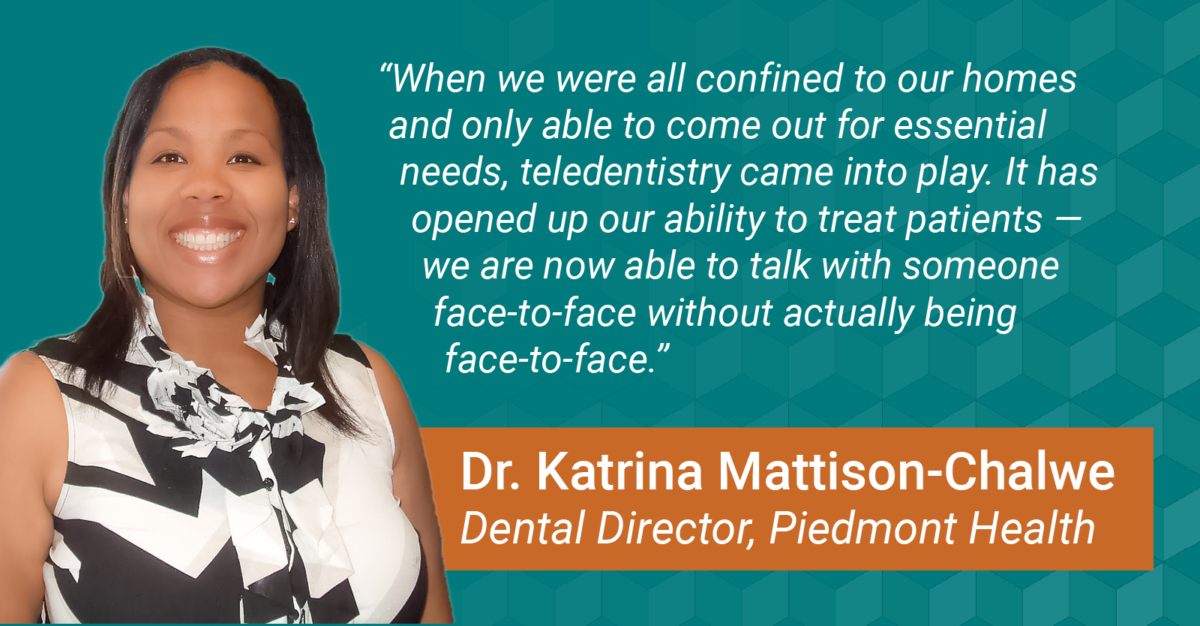“Technology has really changed the field of dentistry since March,” said Dr. Katrina Mattison-Chalwe, Piedmont Health’s dental director, referring to the need for dramatic shifts in how providers approach patient care to adapt to the COVID-19 pandemic.
As COVID-19 closed economies across North Carolina and the U.S., health departments and the American Dental Association recommended that dental providers reduce services to only treat patients with emergent needs. As a result, many practices and clinics began to re-think how they could use teledentistry to maintain patient care.
“When we were all confined to our homes and only able to come out for essential needs, teledentistry came into play,” said Dr. Mattison-Chalwe. “It has opened up our ability to treat patients—we are now able to talk with someone face-to-face without actually being face-to-face.”
While a full slate of dental services cannot be provided remotely—your dentist can’t reach through the computer screen to perform a filling—many diagnostic, education, and consultation services can be performed remotely, connecting patients to a provider for these essential services.
“Teledentistry has enhanced our abilities tremendously,” said Melvin Williamson, a dental assistant at Piedmont Health. “We are able to reach out to our community, especially the younger kids, who need help really bad right now.”
Remote care technology is also helping providers reduce the amount of time a patient needs to be in the office to receive care.
“Teledentistry has allowed us to triage our patients better,” said Dr. Lauren Harrison, a general dentist at Piedmont Health. “It has allowed us to screen our patients without exposing ourselves to anything that’s not necessary, and we’ve also been able to reserve more clinic time for patients who really need that time.”
Traditionally, dental care can require several appointments from start to finish, beginning with an examination, where a dentist and staff would assess the patient, develop a treatment plan, and schedule a follow-up appointment to deliver the care needed. With teledentistry, providers have been able to perform the initial examination remotely, minimizing the time a patient would need to be physically present in clinic.
Earlier this year, NCOHC launched a teledentistry fund with support from the Blue Cross and Blue Shield of North Carolina Foundation. The fund has helped award 20+ grants, including one for Piedmont Health, to purchase annual teledentistry subscriptions. These subscriptions will help health centers and other clinical facilities provide remote patient care both during and after the COVID-19 pandemic.
“We were not prepared for COVID-19. No one was. As a result of that, we didn’t have extra funds to be able to purchase teledentistry licensing for all our providers,” said Dr. Mattison-Chalwe. “The (NCOHC) Teledentistry Fund helped us purchase licenses for all 12 of our providers, so we are able to be on the teledentistry platform while we were all in quarantine, and we are still able to use it now.”


